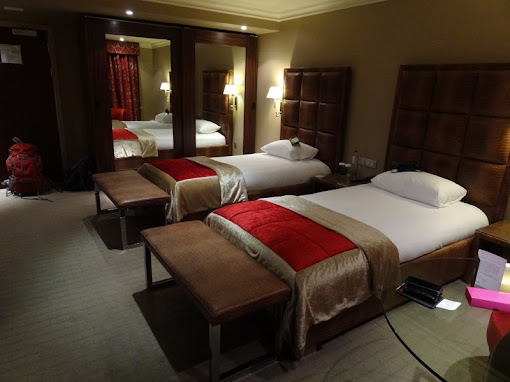The Radisson Plaza Hotel is the only international chain in La Paz, but don't go there expecting international standards in decor and upkeep. In its heyday (probably a few decades ago), this was certainly a five-star hotel with its expansive lobby, full-service amenities, and towering presence over one of the wealthiest districts in La Paz. However, time hasn't been particularly kind, and without any major remodeling of the rooms and facilities, everything now looks incredibly dated and tired.
Armed with my U.S. Bank Club Carlson Visa, I booked two nights here for only 15,000 Gold Points, with the last night free. If I didn't have this benefit, I probably would have just paid for the room out-of-pocket since prepaid nights often go for well under $100 USD. Booking over the Club Carlson website was very straightforward, and they even automatically removed the points deduction for the last night since your credit card and membership accounts are linked.
We arrived at the Radisson Plaza Hotel around 9:00 pm hungry and tired. Thankfully, the wait to check in was short. After an extensive day of traveling, I didn't have the energy or patience to take pictures of the facilities that night, but I did so the next morning. All we really wanted to do was throw our belongings into the room and quickly find something to eat in the area.
Radisson Plaza Hotel La Paz
Lobby


























